Two non - viscous, incompressible and immiscible liquids of densities (rho) and (1.5 rho) are poured into the two limbs of a circular tube of radius ( R) and small cross section kept fixed in a vertical plane as shown in fig. Each liquid occupies one fourth the cirumference of the tube.
Find the angle (theta) that the radius to the interface makes with the verticles in equilibrium position.
The correct Answer is:(a) tan−1√15 (b) 2π√R6.11
To solve the problem, we need to find the angle θ that the radius to the interface makes with the vertical in equilibrium position for two immiscible liquids of different densities in a circular tube. Here’s a step-by-step solution:
Step 1: Understand the Setup
We have two liquids with densities ρ and 1.5ρ occupying one-fourth of the circumference of a circular tube. The tube is vertical, and we need to find the angle θ that the radius to the interface makes with the vertical.
Step 2: Identify the Geometry
Since each liquid occupies one-fourth of the circumference, the angle at the center for each liquid is 90∘. The angle θ is the angle made by the radius to the interface with the vertical. Therefore, the other angle at the interface will be 90∘−θ.
Step 3: Apply Pressure Balance
At equilibrium, the pressure at the same horizontal level in both liquids must be equal. We denote the heights of the liquid columns as h1 for the liquid with density 1.5ρ and h2 for the liquid with density ρ.
Step 4: Determine Heights
From the geometry of the setup:
- The height h1 (for the denser liquid) can be expressed as:
h1=rcosθ−rsinθ=r(cosθ−sinθ)
- The height h2 (for the less dense liquid) can be expressed as:
h2=rsinθ+rcosθ=r(sinθ+cosθ)
Step 5: Set Up the Pressure Equation
Using the hydrostatic pressure formula, we equate the pressures at the same horizontal level:
1.5ρgh1=ρgh2
Substituting the expressions for h1 and h2:
1.5ρg(r(cosθ−sinθ))=ρg(r(sinθ+cosθ))
We can cancel ρgr from both sides:
1.5(cosθ−sinθ)=sinθ+cosθ
Step 6: Simplify the Equation
Rearranging gives:
1.5cosθ−1.5sinθ=sinθ+cosθ
Combining like terms:
1.5cosθ−cosθ=1.5sinθ+sinθ
This simplifies to:
0.5cosθ=2.5sinθ
Step 7: Solve for tanθ
Dividing both sides by cosθ:
0.5=2.5tanθ
Thus:
tanθ=0.52.5=15
Step 8: Find θ
Finally, we find θ:
θ=tan−1(15)
Final Answer
The angle θ that the radius to the interface makes with the vertical in equilibrium position is:
θ=tan−1(15)
We have two liquids with densities ρ and 1.5ρ occupying one-fourth of the circumference of a circular tube. The tube is vertical, and we need to find the angle θ that the radius to the interface makes with the vertical.
Since each liquid occupies one-fourth of the circumference, the angle at the center for each liquid is 90∘. The angle θ is the angle made by the radius to the interface with the vertical. Therefore, the other angle at the interface will be 90∘−θ.
At equilibrium, the pressure at the same horizontal level in both liquids must be equal. We denote the heights of the liquid columns as h1 for the liquid with density 1.5ρ and h2 for the liquid with density ρ.
From the geometry of the setup:
- The height h1 (for the denser liquid) can be expressed as:
h1=rcosθ−rsinθ=r(cosθ−sinθ)
- The height h2 (for the less dense liquid) can be expressed as:
h2=rsinθ+rcosθ=r(sinθ+cosθ)
Using the hydrostatic pressure formula, we equate the pressures at the same horizontal level:
1.5ρgh1=ρgh2
Substituting the expressions for h1 and h2:
1.5ρg(r(cosθ−sinθ))=ρg(r(sinθ+cosθ))
We can cancel ρgr from both sides:
1.5(cosθ−sinθ)=sinθ+cosθ
Rearranging gives:
1.5cosθ−1.5sinθ=sinθ+cosθ
Combining like terms:
1.5cosθ−cosθ=1.5sinθ+sinθ
This simplifies to:
0.5cosθ=2.5sinθ
Dividing both sides by cosθ:
0.5=2.5tanθ
Thus:
tanθ=0.52.5=15
Finally, we find θ:
θ=tan−1(15)
The angle θ that the radius to the interface makes with the vertical in equilibrium position is:
θ=tan−1(15)
Topper's Solved these Questions
- SIMPLE HARMONIC MOTION Book:RESONANCE ENGLISHChapter:SIMPLE HARMONIC MOTION Exercise:Exercise- 3, PART - II
Explore 17 Videos
- SEMICONDUCTORSBook:RESONANCE ENGLISHChapter:SEMICONDUCTORSExercise:Exercise 3
Explore 88 Videos
- TEST PAPERSBook:RESONANCE ENGLISHChapter:TEST PAPERSExercise:PHYSICS
Explore 784 Videos
Similar Questions
A small uniform tube is bent into a circle of radius r whose plane is vertical. Equal volumes of two fluids whose densities areρ and σ(ρ>σ) fill half the circle. Find the angle that the radius passing through the interface makes with the vertical.
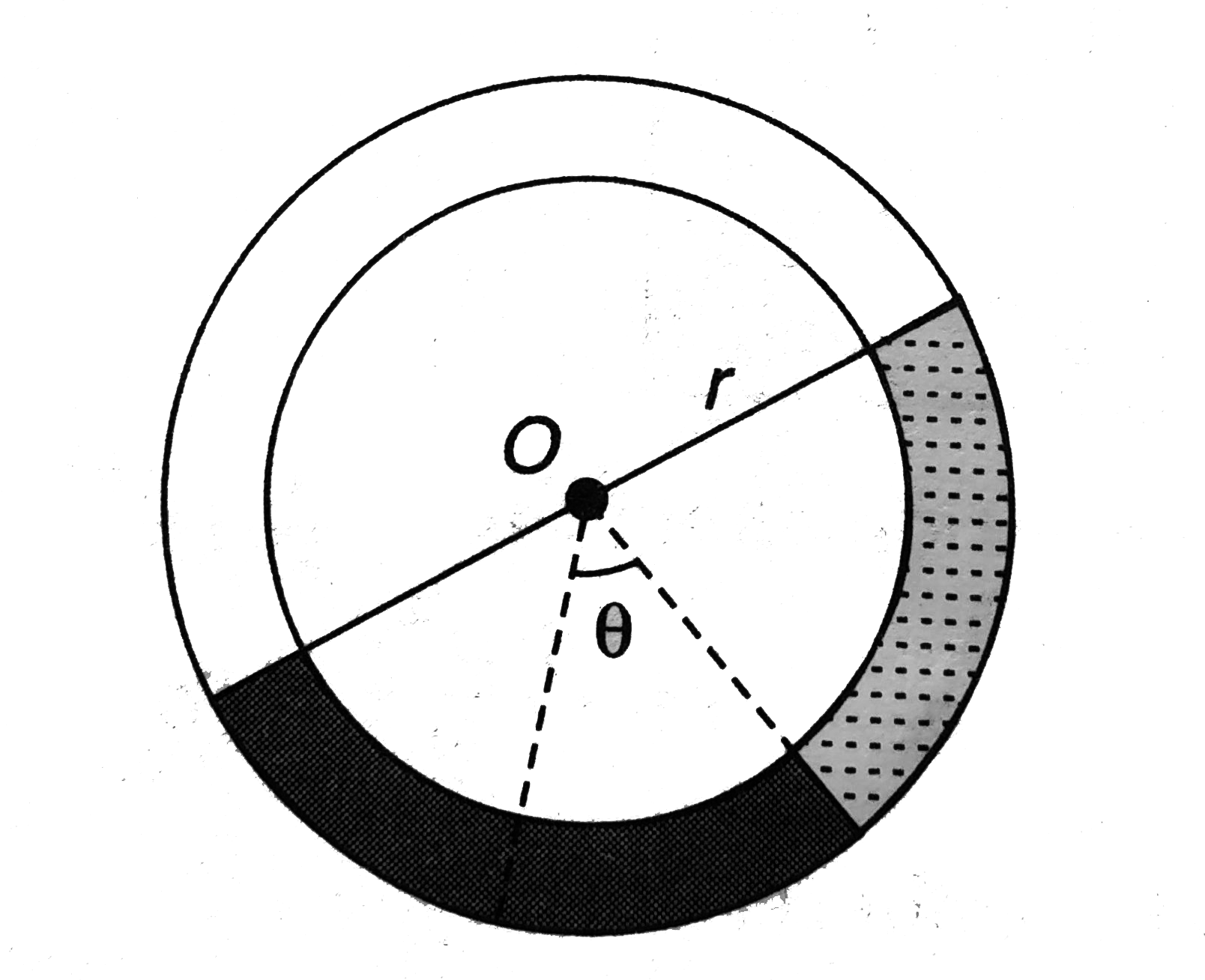
View SolutionA V-shaped glass tube of uniform cross section is kept in a vertical plane as shown. A liquid is poured in the tube. In equilibrum the level of liquid in both limds of tube. Find the angular frequency of small oscillation of liquid.
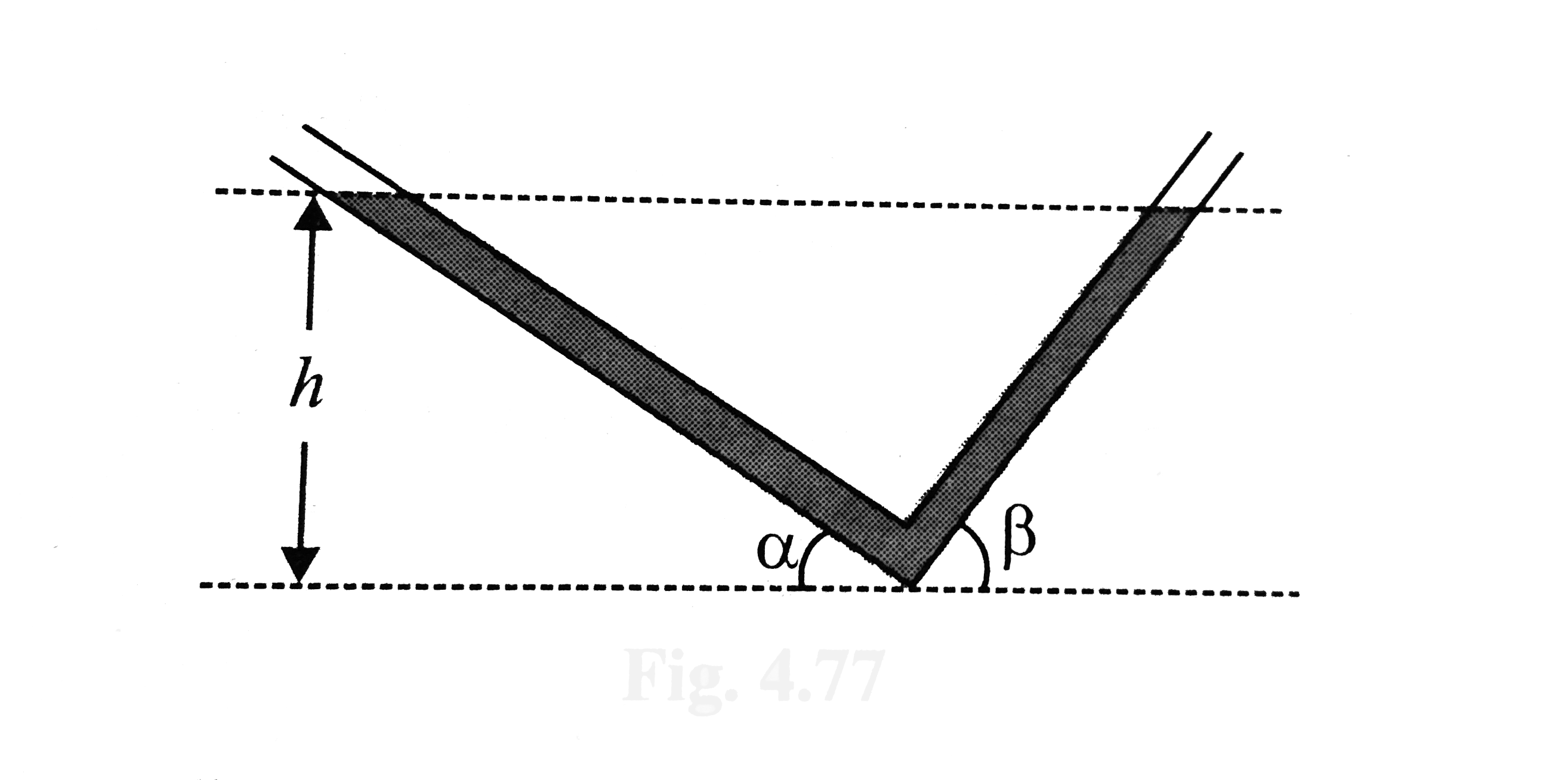
View SolutionA wooden plank of length 1m and uniform cross-section is hinged at one end to the bottom of a tank as shown in fig. The tank is filled with water upto a hight 0.5m. The specific gravity of the plank is 0.5. Find the angle θ that the plank makes with the vertical in the equilibrium position. (Exclude the case θ=θ∘)

View SolutionA circular tube of uniform cross section is filled with two liquids densities ρ1 and ρ2 such that half of each liquid occupies a quarter to volume of the tube. If the line joining the free surfaces of the liquid makes an angle θ with horizontal find the value of θ.
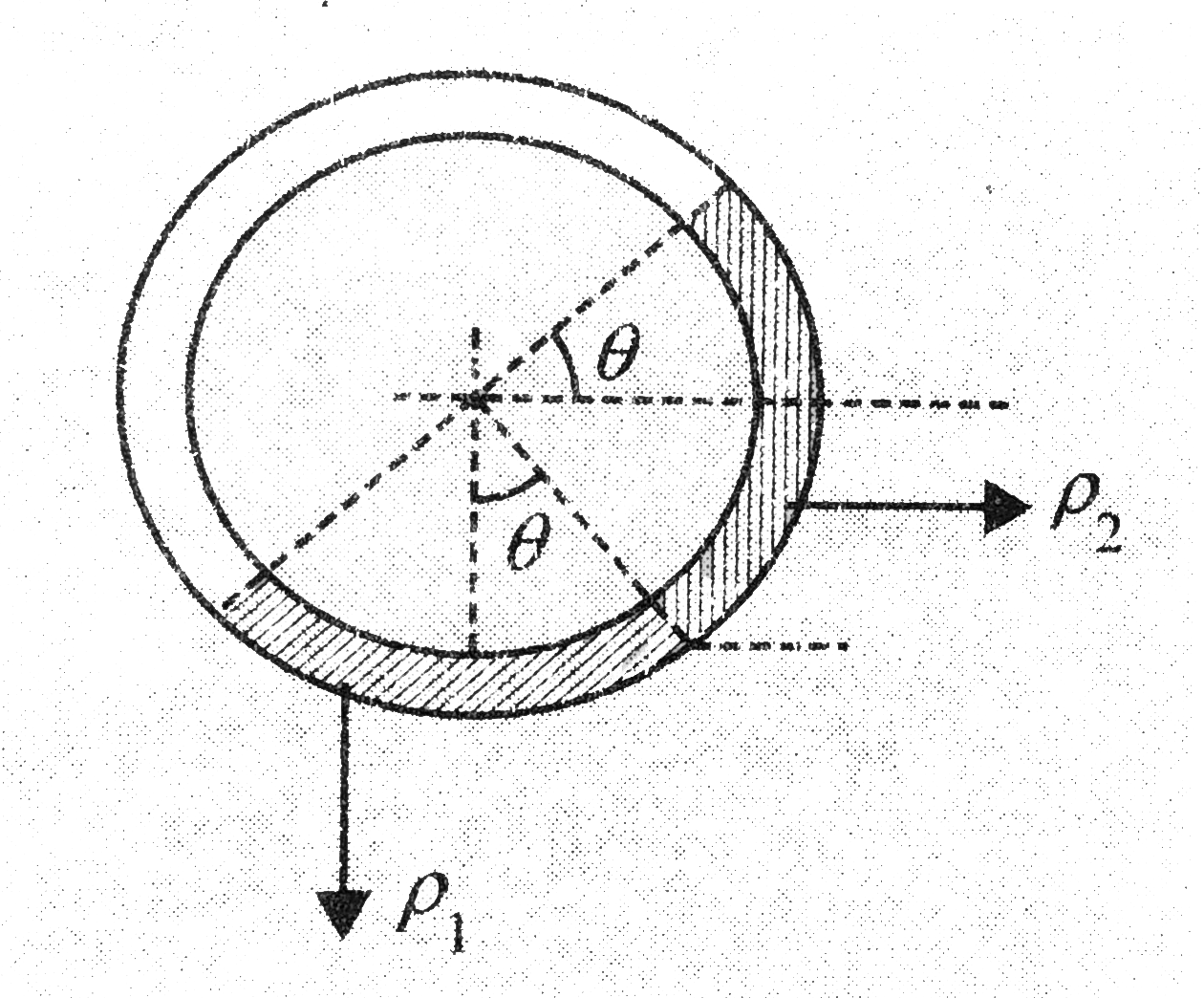
View SolutionThe wooden plank of length 1 m and uniform cross section is hinged at one end to the bottom of a tank as shown in figure. The tank is filled with water up to a height of 0.5 m. The specific gravity of the plank is 0.5. Find the angle θ that the plank makes with the vertical in the equilibrium position. (Exclude the case θ=0)
 ,
,
View SolutionA uniform long tube is bent into a circle of radius R and it lies in vertical plane. Two liquids of same volume but densities ρ and δ fill half the tube. The angle θ is

View SolutionThere is a circular tube in a vertical plane. Two liquids which do not mix and of densities d1andd2 are filled in the tube. Each liquid subtends 90∘ angle at centre. Radius joining their interface make an angle α with vertical. Ratio d1d2 is :
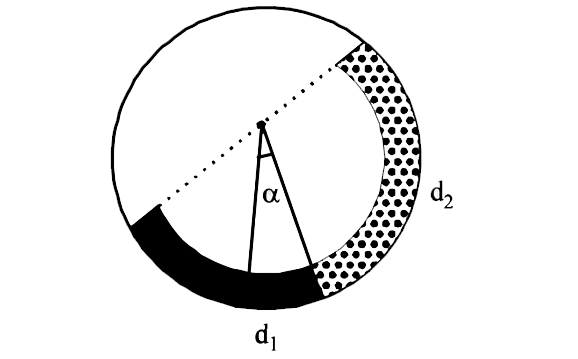
View SolutionA tube in vertical plane is shown in figure. It is filled with a liquid of density ρ and its end B is closed. Then the force exerted by the fluid on the tube at end B will be: [Assume the radius of the tube to be negligible in comparison to l]

View SolutionIn a U-tube, two immiscible liquids of density ρ1andρ2 are arranged as shown in figure. The right part of the tube is closed at the top and some air is entrapped above liquid of density ρ2. The gauge pressure of this air is :
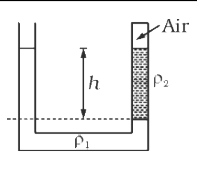
View SolutionA liquid of density ρ is filled in a U-tube is accelerated with an acceleration a so that the height of liquid in its two vertical arms are h1andh2 as shown in the figure. If l is the length of horizontal arm of the tube, the acceleration a is
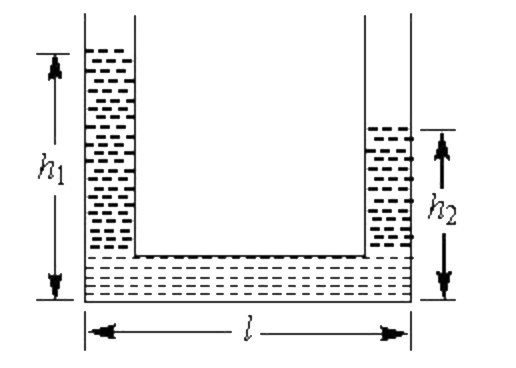
View Solution

